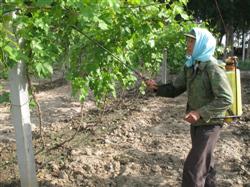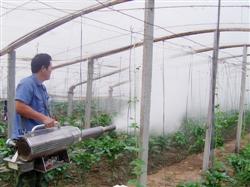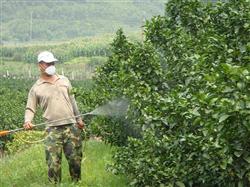What should we pay attention to when using plant growth regulators?

What should we pay attention to when using plant growth regulators? Please guide plant growth regulators have been widely used in grain, cotton, fruit, vegetable crops, often due to improper use resulting in poor effect or frequent occurrence of diseases. Therefore, when using plant growth regulators, we should pay attention to the following points: first, targeted dosage forms: at present, there are many kinds of plant growth regulators sold on the market, mainly extensive type and special type. Extensiveness can be applied to a variety of plants, special type is limited to the use of certain plants or certain plants, should be targeted selection. Second, can not replace fertilizer with medicine: plant growth regulators are regulating substances in organisms and can not replace fertilizer, water and other agricultural measures. Even if it is a promotive plant growth regulator, it must have sufficient fertilizer and water conditions to play its due role. Although some plant growth regulators add some concentrated nitrogen, phosphorus, potassium and trace elements, but the content is very small, the effect is not great, do not think that crops are green and strong, there is no shortage of fertilizer. Third, master the concentration and frequency of use: the concentration requirements of crops on plant growth regulators are relatively strict. Excessive concentration will lead to thickening and brittleness of leaves, deformity or dry shedding or even death of the whole plant; too low concentration will not achieve the desired effect. Therefore, it should be flexibly mastered according to the variety type and application purpose of plant growth regulators, as well as the growth period and performance of crops, weather conditions and other factors. Extensive plant growth regulators are generally sprayed for 2-3 times, and it is better to apply plant growth retarders in small doses for many times. 4. do not use ethephon, gibberellin and other plant growth regulators in vegetable, cotton, wheat and other breeding crops. Although they play the role of early ripening and increasing production, it will cause the increase of sterile spikes and the serious decrease of seed germination rate. Can not be reserved for seed use. Therefore, for crops that keep seeds, plant growth regulators should be used with caution. The drug damage caused by plant growth regulators on crops mainly refers to the imbalance of hormones in plants caused by improper use of plant growth regulators. Allergy caused by physiological changes and plant shape changes that are not consistent with the purpose of the use of plant growth regulators. In general, it is shown as follows: flower and fruit drop caused by the use of flower and fruit protection agents; plant deformities, leaf spots, scorch, yellowing, and a series of symptoms such as falling leaves, small fruits, fruit dehiscence caused by the use of auxin regulators; the use of growth inhibitors and retarders caused plants to be too short, small fruits, dehiscence, leaf deformities, plant deformities, atrophy, stem fragility and other phenomena confined to the category of drug damage. The key points caused by plant growth regulators can be divided into acute and chronic. Acute drug damage usually occurs within a few hours or 10 days after application; chronic drug damage usually occurs after 10 days, and some can not be detected until the harvest time. Therefore, enough attention must be paid to the symptoms, causes and timely prevention of drug damage caused by plant growth regulators. Click to get more regulator application techniques click to get more pesticide application techniques
- Prev

How to use plant growth regulators?
How to use plant growth regulators? Plant growth regulators are synthetic, artificially extracted exogenous substances with physiological activities of plant hormones, and very small amounts can promote or inhibit or hinder the growth and development of plants. Scientific and rational use of plant growth regulators is to achieve crop increase.
- Next

How do crops use growth regulators?
How do crops use growth regulators? Please introduce the use of growth regulators can refer to the following methods: 1, combined with cultivation measures. Plant growth regulator is not a nutrient, it can only regulate plant growth and development, can not replace the demand for temperature, light, water, fertilizer, etc.
Related
- Fuxing push coffee new agricultural production and marketing class: lack of small-scale processing plants
- Jujube rice field leisure farm deep ploughing Yilan for five years to create a space for organic food and play
- Nongyu Farm-A trial of organic papaya for brave women with advanced technology
- Four points for attention in the prevention and control of diseases and insect pests of edible fungi
- How to add nutrient solution to Edible Fungi
- Is there any good way to control edible fungus mites?
- Open Inoculation Technology of Edible Fungi
- Is there any clever way to use fertilizer for edible fungus in winter?
- What agents are used to kill the pathogens of edible fungi in the mushroom shed?
- Rapid drying of Edible Fungi

